- Home
- Art History
- Impressionism
- Alfred Sisley
Alfred Sisley - French Impressionist
Alfred Sisley (1839 - 1899)
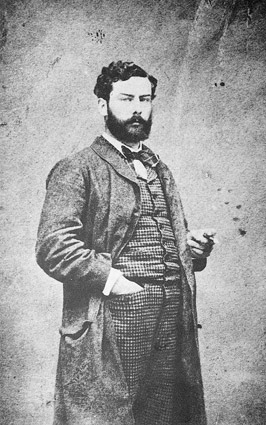
Alfred Sisely, French Impressionist painter, was known for his serene landscapes and almost exclusive adherence to the plein air technique.
Born in Paris to affluent English parents, Sisley studied art at the École des Beaux-Arts and later under Charles Gleyre, where he met fellow Impressionists Claude Monet and Pierre-Auguste Renoir. Primarily focusing on rural scenes, Sisley's art captures the beauty of nature, often featuring the rivers and countryside surrounding Paris. His delicate brushwork, subtle color palette, and keen observation of light and atmosphere evoke a sense of some tranquility in his works.
from France to Britain
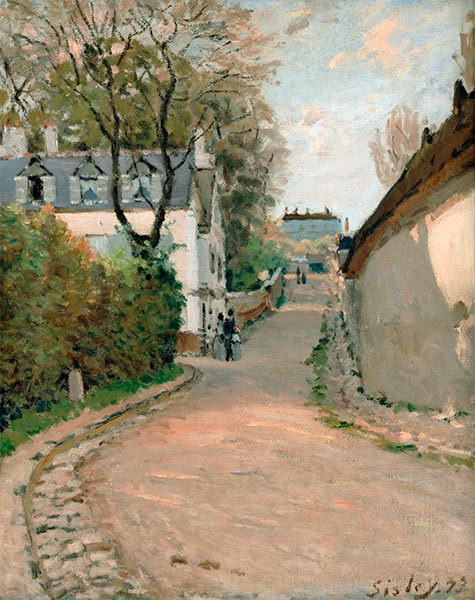
Sisley was born in Paris to a wealthy English family. He spent time
in both countries throughout his life. While many of his notable works
were produced during visits to England, he was particularly inspired by
the rural towns and countrysides that he was exposed to in France. These
became the focus of many of his paintings.
in southern England
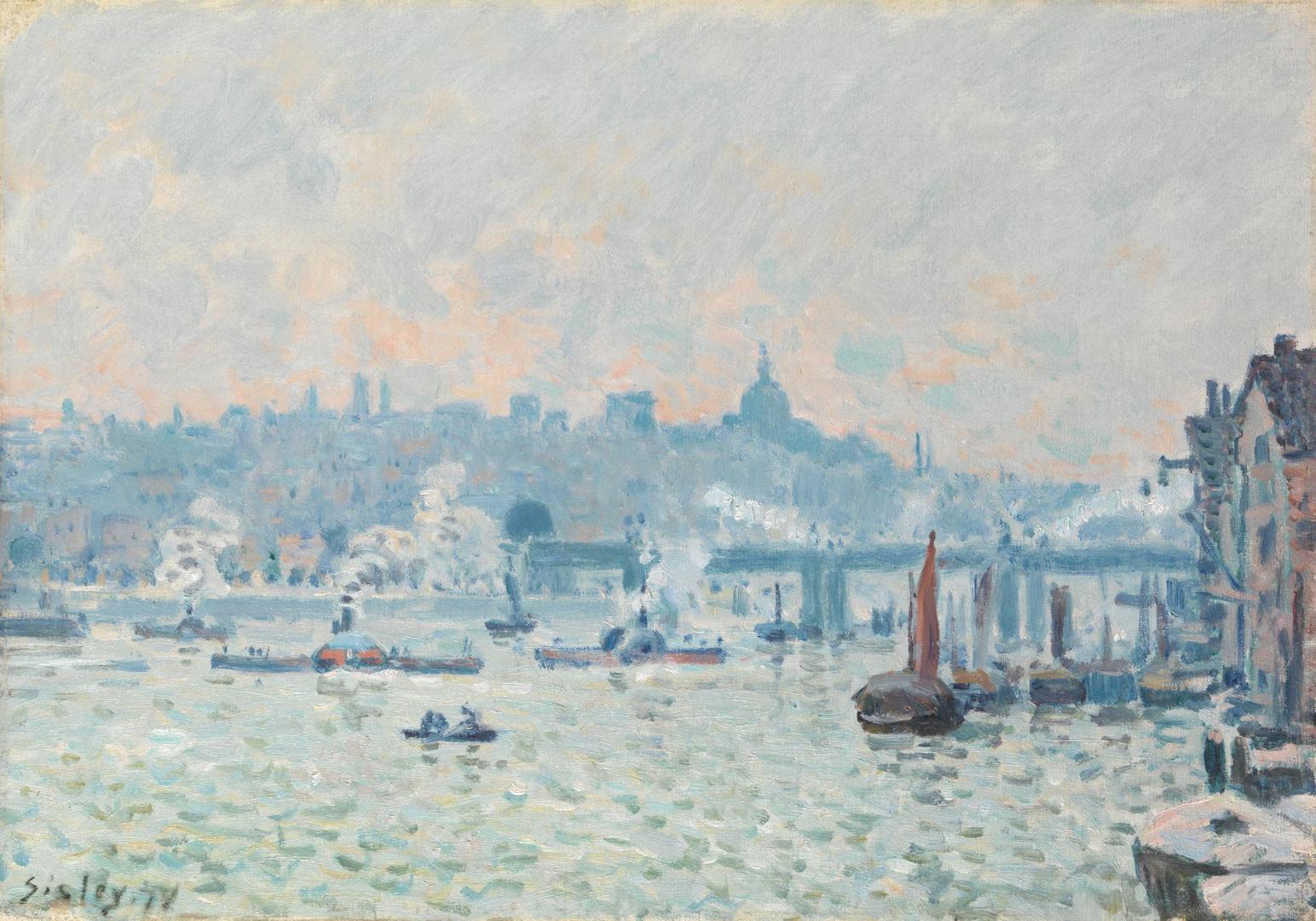 View of the Thames: Charing Cross Bridge
View of the Thames: Charing Cross BridgeAlthough Sisley lived in France for most of his life, he maintained British citizenship. He visited London several times in the 1870s, where he found inspiration in the distinctive urban scenery and atmospheric conditions of the city. During this time in the British capital, Sisley focused on depicting the River Thames and its bridges, capturing the unique interplay of light, water, and architecture. These works exhibit Sisley's masterful handling of color, light, and atmosphere, which were hallmarks of his Impressionist style.
life in France
Sisley spent the majority of his life in France, despite his British heritage. Born in Paris, he studied at the École des Beaux-Arts and under Charles Gleyre, where he befriended Monet and Renoir. Living and working primarily in the Parisian suburbs, Sisley immersed himself in the picturesque landscapes and changing seasons of the French countryside.
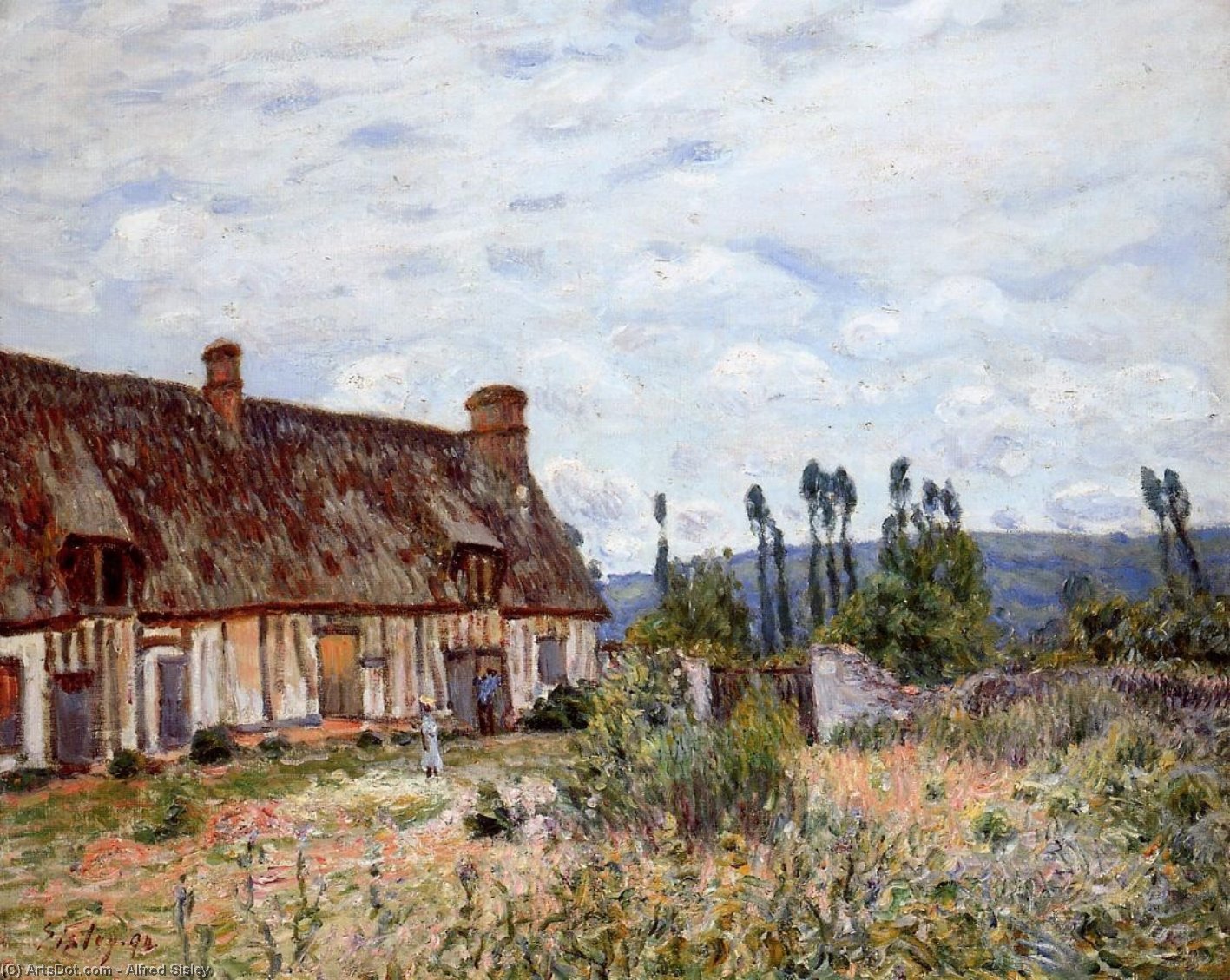
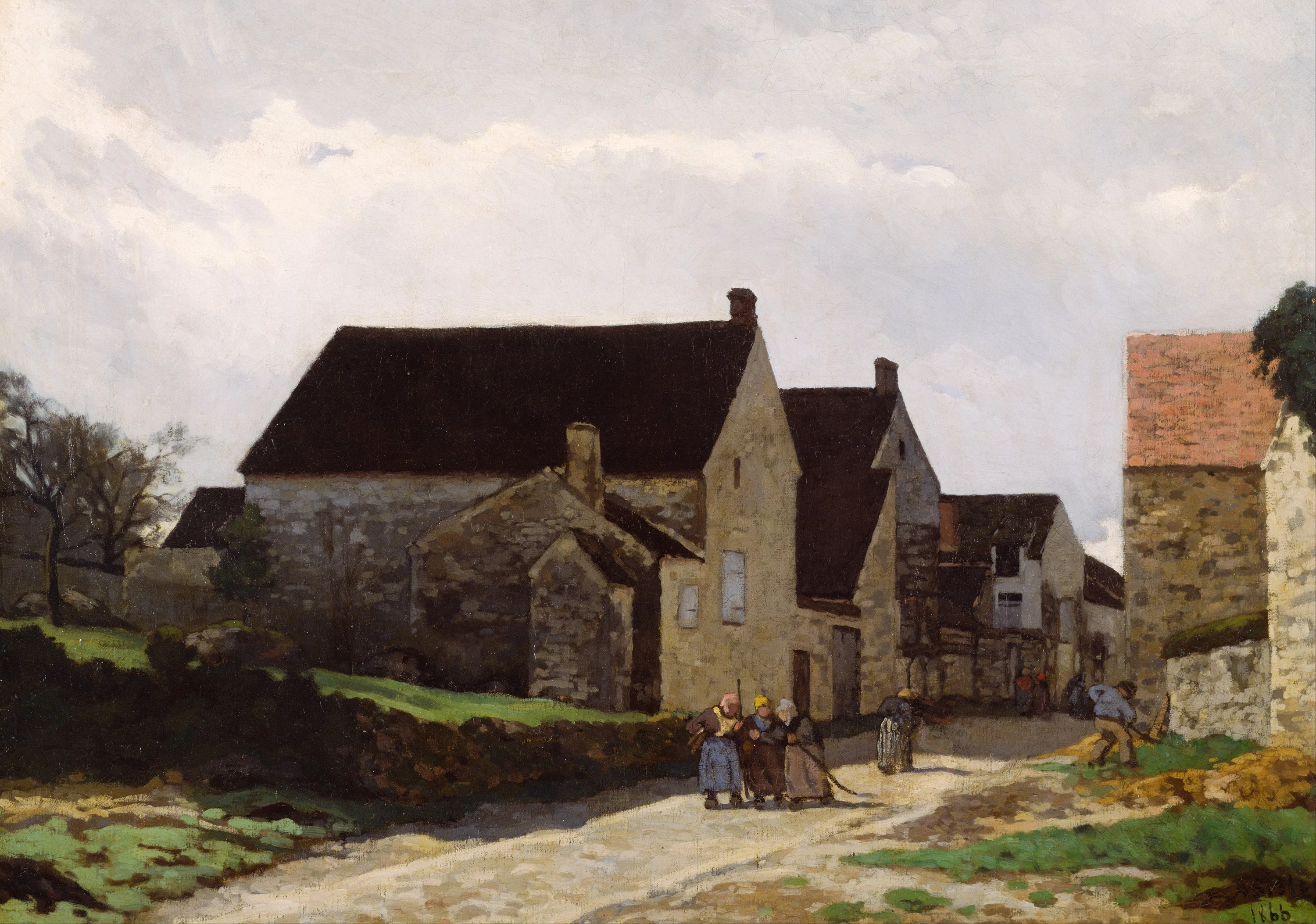
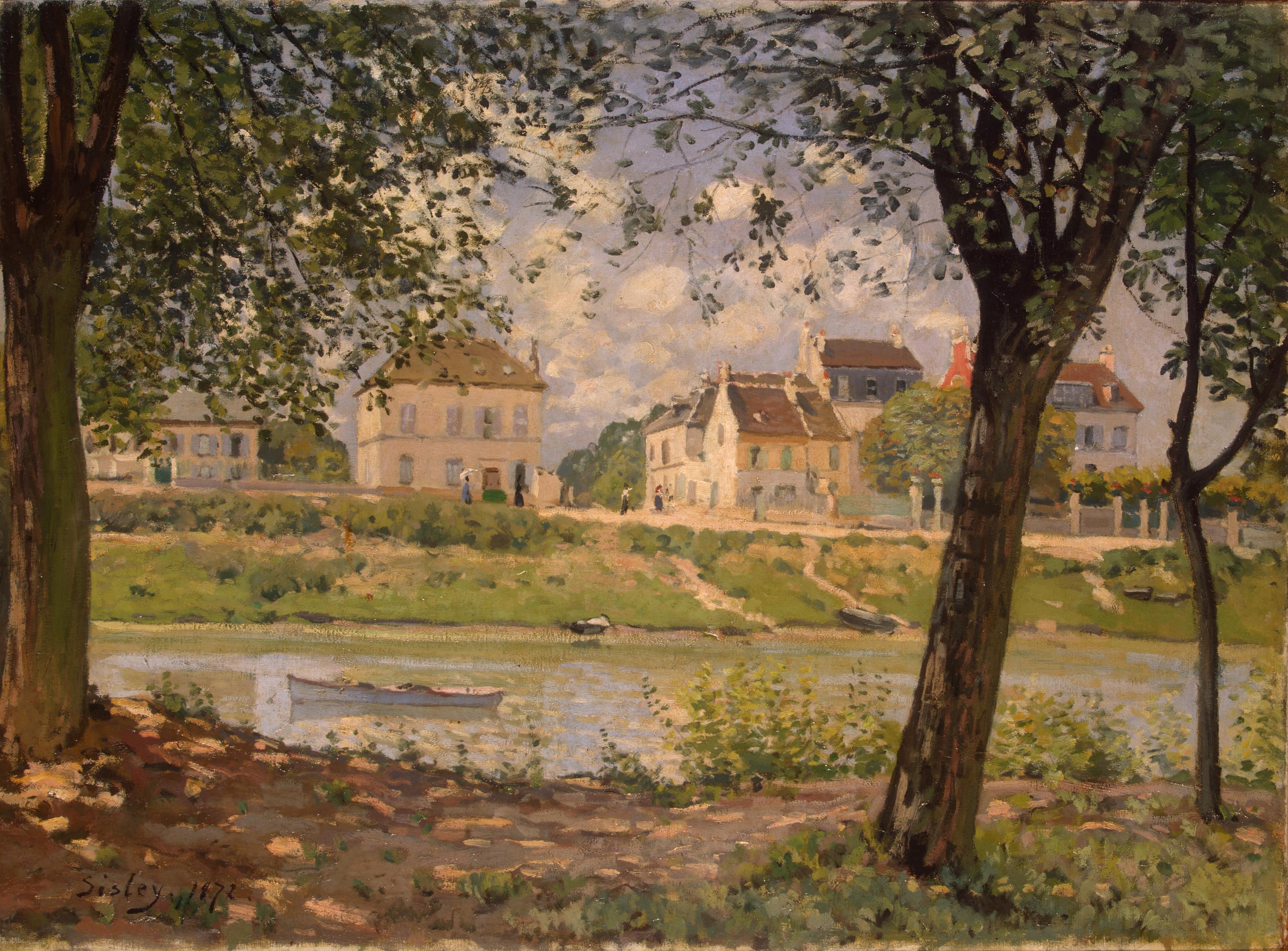
Throughout his career, he focused on capturing the beauty of the rivers and rural scenes surrounding Paris. Sisley's dedication to plein air painting and his naturalistic style became cornerstones of his artistic legacy.
Moret-sur-Loing
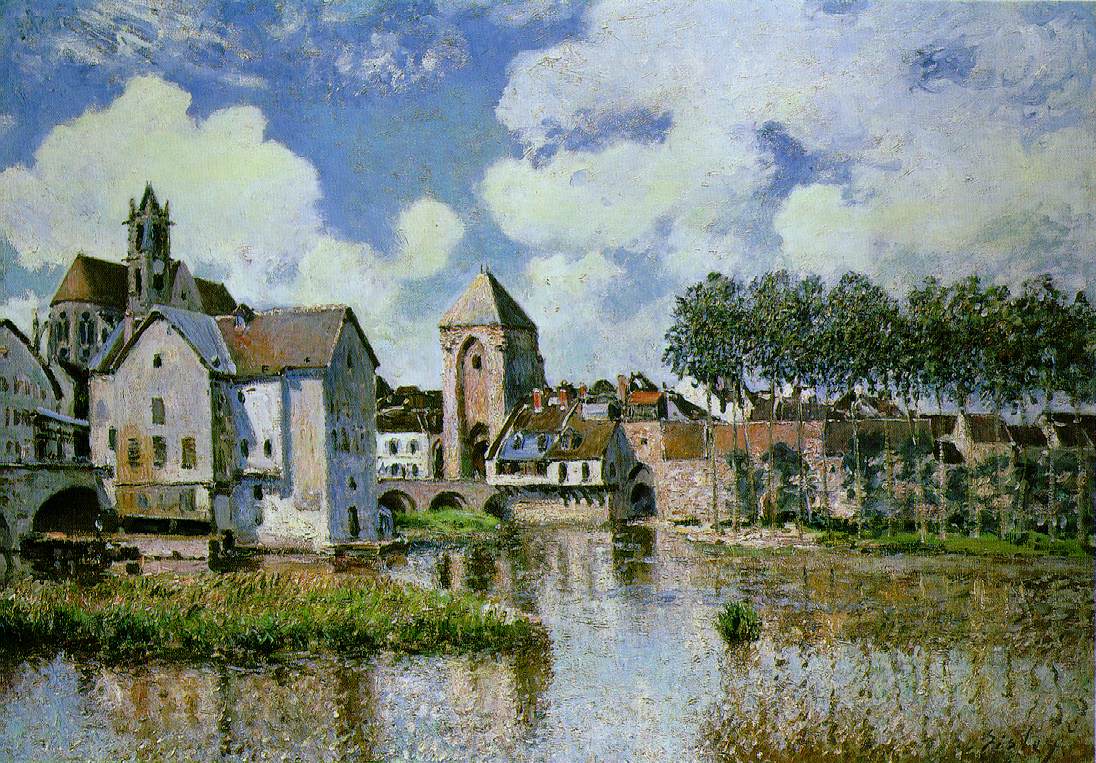 Moret-sur-Loing
Moret-sur-LoingMoret-sur-Loing, a picturesque town in France where Alfred Sisley lived during the final years of his life, became a recurring subject in his paintings. The charming medieval architecture, the iconic bridge, and the serene Loing River provided ample inspiration for Sisley who sought to capture the essence of the town and its surroundings. Through his masterful use of color and light Sisley portrayed the changing seasons, atmospheric conditions, and tranquil beauty of the town where he spent his last years.
final visit to Britain
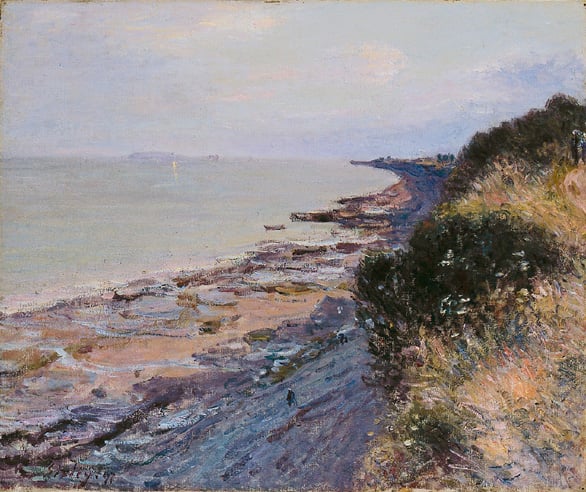 La Falaise á Penarth, Le Soir Marée Basse
La Falaise á Penarth, Le Soir Marée BasseSisley's final visit to Britain occurred in 1897, just two years before his death. During this trip, he painted a series of works in and around the coastal town of Penarth in Wales. He captured the rugged beauty and dramatic weather of the region. These paintings showcase his sensitivity to the local atmosphere, natural beauty, and maritime landscape. This final trip to his homeland allowed him to reconnect with his British roots before returning to France.
Going Further ...
- Sisley's preferred easel setup outdoors ins known as _________ _____ painting.
- Sisley's paintings showed an Impressionist vision of which two countries?
- How was Sisley's training and travels similar to other Impressionist painters?
- How long had photography been available before the end of Sisley's life?
- See also: NYT - Alfred Sisley: The Unheralded Impressionist
Okay, so now I've put on some ads from Amazon - from which I may earn a few cents. (2025)



